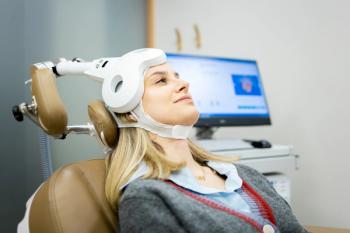
Integrating Mental Health Apps Into Care With Your Patients: What You Need to Know
Here’s everything you need to know to about how to integrate apps into your clinical practice.
ADAA PARTNER
Over the past decade, interest in mobile mental health apps has increased substantially among patients, and new research suggests that these apps have the potential to increase access to and even quality of care. As such, psychiatrists and other mental health professionals are starting to integrate apps into their patients’ care, and for good reason. Apps can augment traditional care in various ways, from providing
However, as with any new technology, there are both benefits and risks to consider when it comes to integrating apps into care. Here, we explore the use of mobile mental health apps in psychiatric care and offer advice for effectively incorporating these tools into practice. We discuss the benefits and limitations of using these apps, as well as considerations for privacy, security, and ethical concerns, with the goal of providing clinicians with practical advice for making informed decisions about using apps that may lead to better outcomes for their patients.
Benefits & Risks
A growing body of research suggests that incorporating apps into care could be an effective strategy with the potential for several benefits, from enhancing therapeutic outcomes to increasing access to evidence-based interventions. There is now preliminary evidence to support the efficacy of different kinds of apps for various target populations. For example, a recent umbrella review found that apps can reduce depression and anxiety, as well as stress levels and symptoms of
As interest in apps expands, so do questions about how to safely select and support them in care. Whether using apps to provide in-the-moment relief in the face of restricted clinic hours and long waitlists for clinical visitsor to augment ongoing patient care, there are common decisions to make and factors to consider.
The challenges of integrating apps into care at first appear formidable and include confidentiality breaches, safety issues, and problems with quality content. The US Food and Drug Administration (FDA) does not currently regulate the general app space as most
A large concern among users is often the lack of protection from third-party access to confidential information among many apps.1 For example, a review of apps for bipolar disorder found that only 22% included a clear privacy policy to explain to users how their data is being used.4 A second concern is related to safety issues in emergency situations. A recent review of apps addressing suicidality found that none of them offered visible crisis support contact information.5 Finally, many apps available on app stores lack not only evidence of effectiveness but also an empirically supported foundation for their recommended interventions.1 What is clear is that not every app is ideal for patients, and integrating apps into care requires providers’ careful evaluation of potentially helpful apps.
Identifying the Most Useful, Safe, and Effective Apps
With thousands6 of mental health apps available in app stores, it can be difficult to sort through various apps and find the right one for your clients’ needs. As such, clinicians are often tempted to select an app with a high star rating; however, research suggests that stars do not correlate with app quality.7 In other words, a higher star rating may not translate to higher quality in-app content and functionality.
To address these issues, our team helped to develop what has become the American Psychiatric Association’s (APA) App Evaluation Framework,8 designed to help patients and providers evaluate and select mental health apps to use in clinical practice. The premise that this framework rests on is that when it comes to apps, there is no universal “one size fits all” approach. Just as you would not offer the same exact treatment to all patients, one app will not be suitable for all patients. Instead, the APA recommends assessing each app’s functions and features in the context of its potential use for a given clinical case.
To make this framework actionable, there are clear criteria that providers and patients can use to ensure an app may be safer and more effective (
While this guidance is helpful, it can still be time-consuming for clinicians to sort through apps and evaluate them in this way. For this reason, we operationalized the framework into an easy-to-use searchable app database in which mental health apps are constantly evaluated based on these criteria. This app database is called the M-Health Index and Navigation Database (MIND) and is accessible for free at mindapp.org. A variety of filters matching the APA criteria (and more) can be toggled on and off to identify suitable apps. These filters range from apps’ clinical features (eg, mood monitoring, CBT exercises) to privacy settings (eg, whether PHI is shared), to apps that are offered at no cost. By considering the unique needs of each patient, clinicians can thus make informed decisions about which apps may be most beneficial in supporting specific treatment goals.
Supporting App Engagement as a Pathway to Outcomes
One frequent finding across studies is that improvements due to app use are contingent on consistent engagement with an app. In other words, if patients forget or are unwilling to engage sufficiently with a mental health app, they will simply not benefit from them. Because there is also evidence of a steep decline in standalone app engagement soon after app download, it is also important to incorporate strategies to support sustained app engagement when introducing apps to patients.
Several factors need to be considered to ensure sustained engagement. Research on user perceptions of mental health apps suggests that it is particularly important for clinicians to find apps that score high on ease of use and privacy features.9 This is reasonable, as apps that are too complicated or lack credibility are not likely to be apps that patients will want to continue using. Thus, when looking for an appropriate mental health app for patients, clinicians should emphasize these features.
A second consideration is tailoring the app to patient needs. When introducing any therapeutic intervention (eg,
Finally, special consideration can be given to integrating human support specifically to support app use. This is based on research that suggests that apps with human support have better outcomes than standalone apps.11 Human support can be offered by establishing a new role in the health care system: the digital navigator.12 The implementation of digital navigators has gained traction over the past few years, and their early adoption is becoming more widespread. This new kind of clinical care team member can be dedicated to integrating mobile apps into clinical care by helping patients troubleshoot technology issues, summarizing digital data for use by the clinician or the patient, and recommending apps based on an app evaluation framework.13 While hiring digital navigators may not be feasible for all teams, organizations such as publicly funded health systems may be able to fill the role. For example, private hospitals or clinics can consider hiring digital navigators to promote individual efforts. Incorporating digital navigators as a part of the clinical care team can greatly enhance sustained app engagement—increasing the likelihood of enhancing patient outcomes.
Concluding Thoughts
The integration of mobile mental health apps into care is a promising way of increasing the reach and impact of psychiatric care. There is growing evidence to support the efficacy of different kinds of apps for various target populations, and mental health professionals are beginning to incorporate these apps into their patients’ care. To mitigate any potential risks around app use, the APA’s App Evaluation Framework offers useful guidance for clinicians and their patients in evaluating and selecting the most effective, safe, and useful apps for their specific needs. As the field of mental health apps continues to grow, it is important for mental health professionals to continue to evaluate and adapt their use of these apps in clinical care. It is a process into which it is worth investing time and resources, as integrating mental health apps into care has the potential to improve patient outcomes and increase access to evidence-based interventions.
Dr Macrynikola is a Psychologist & Researcher, Director of the Digital Clinic at BIDMC’s Division of Digital Psychiatry, Division of Digital Psychiatry, Beth Israel Deaconess Medical Center (BIDMC), Harvard Medical School. Dr Torous is Director of the Division of the Digital Psychiatry, Beth Israel Deaconess Medical Center (BIDMC), Harvard Medical School.
Employed as a psychologist and researcher by the Division of Digital Psychiatry, which was involved in developing the APA’s App Evaluation Framework and mindapps.org, both of which are mentioned in the article.
References
1. Koh J, Tng GYQ, Hartanto A.
2. Tan ZYA, Wong SH, Cheng LJ, Lau ST.
3. Petrovic M, Gaggioli A.
4. Nicholas J, Larsen ME, Proudfoot J, Christensen H.
5. Larsen ME, Nicholas J, Christensen H.
6. Carrouel F, du Sartz de Vigneulles B, Bourgeois D, et al.
7. Neary M, Bunyi J, Palomares K, et al.
8. Henson P, David G, Albright K, Torous J.
9. Chan AHY, Honey MLL.
10. Borghouts J, Eikey E, Mark G, et al.
11. Meyer A, Wisniewski H, Torous J.
12. Wisniewski H, Torous J.
13. Wisniewski H, Gorrindo T, Rauseo-Ricupero N, et al.
Newsletter
Receive trusted psychiatric news, expert analysis, and clinical insights — subscribe today to support your practice and your patients.











